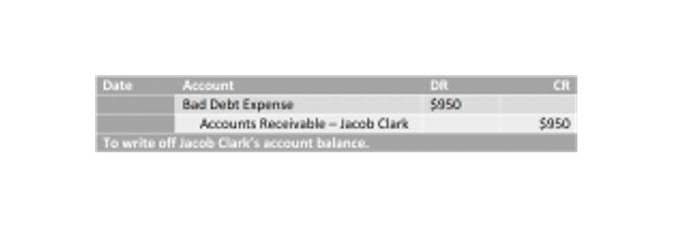
Both parties do not enter the sale transaction into their general ledger until the goods have arrived to the buyer, and the seller retains the risk of the goods while they are in transit. A common mistake is to use FOB (Free on Board) Incoterms® for containerised goods instead of using a rule for all transport modes. Under FOB, the risk is officially transferred when the cargo is loaded onboard the vessel.
- Since FOB shipping point transfers the title of the shipment of goods when the goods are placed at the shipping point, the legal title of those goods is transferred to the buyer.
- FOB is a widely used shipping term that applies to both domestic and international transactions.
- The International Commerce Center (ICC), explains FOB is only viable for sea and inland waterway shipments.
- As an example of FOB shipping point accounting, suppose the value of the goods is again 5,000 and the freight expense from the shipping point of 600 is paid in cash by the buyer.
- There are two main types of free on board freight with several sub-designations, including FOB destination and FOB shipping point.
- Please clarify insurance terms to ensure the buyer can avoid unforeseen events.
- When transporting products to a customer, the two basic alternatives are FOB shipping point or FOB destination.
Who pays FOB destination freight?
This option can allow buyers to negotiate lower shipping rates and may be more cost-effective in the long run. Additionally, FOB Shipping Point can be more flexible, as buyers can choose their carriers and shipping methods. However, FOB Destination can also be more expensive for the seller, as they are responsible for all transportation costs and any potential damages or losses during transit. This may result in higher prices for the buyer, as the seller may need to factor in these additional costs when setting their prices.
FOB destination
The term FOB is also used in modern domestic shipping within North America to describe the point at which a seller is no longer responsible for shipping costs. Each of these terms carries distinct implications for ownership, liability, and costs in the supply chain. Specifically, FOB shipping point indicates that the buyer assumes responsibility the moment goods are loaded for departure. When shipping goods to a customer, FOB shipping point or FOB destination may be two primary options to choose from. FOB shipping point holds the seller liable for the goods until the goods begin their transport to the customer, while FOB destination holds the seller liable for the goods until they have reached the customer. For example, assume Company XYZ in the U.S. buys computers from a supplier in China and signs a FOB destination agreement.
What is the difference between FOB shipping and FOB destination?
Assume the computers were never delivered to Company XYZ’s destination, for whatever reason. The supplier takes full responsibility for the computers and must reimburse Company XYZ or reship the computers. FOB shipping point, also known as FOB origin, indicates that the title and responsibility of goods transfer from the seller to the buyer when the goods are placed on a delivery vehicle. Free on board, also referred to as freight on board, only refers to shipments made via waterways, and does not apply to any goods transported by vehicle or by air. Free on board (FOB) shipping point and free on board (FOB) destination are two of several international commercial terms (Incoterms) published by the International Chamber of Commerce (ICC). The FOB Incoterms® rule is only applied to goods transported by sea or inland waterway.

Sign up for our logistics newsletters

Because the seller is responsible for the goods until they are loaded on the vessel, they need to ensure the goods arrive at the vessel. Since most goods are now delivered to container yards rather than right to a particular vessel, FOB is normally used only in a few instances with containers at smaller ports. If you are shipping less than container load (LCL), your cargo will be loaded onto the truck and taken to a warehouse to consolidate your shipment with the other consignments sharing the same container. In FOB transactions, several key shipping documents are vital in facilitating the smooth transfer of goods from the seller to the buyer. Two crucial documents in this context are the Bill of Lading (B/L) and the Commercial Invoice.
Disadvantages of Shipping FOB for the Buyer
Read all contracts carefully, calculate potential costs, purchase insurance—and consider negotiating additional terms in your shipping or sales agreement to protect against losses. There are 11 internationally recognized Incoterms that cover buyer and seller responsibilities during exports. Some Incoterms can be used https://www.bookstime.com/ only for transport via sea, while others can be used for any mode of transportation. If a shipment is sent under FOB destination terms, the seller won’t record the sale until the goods reach the buyer’s location. Likewise, the buyer won’t officially add the goods to its inventory until they arrive and are inspected.
- Specifically, FOB shipping point indicates that the buyer assumes responsibility the moment goods are loaded for departure.
- Under Free on Board, the seller is responsible for delivering the goods to the port of departure, clearing it for export, and loading the goods on the vessel.
- FOB Shipping Point may be a good option if the buyer wants more control over the transportation process or if they are located closer to the seller.
- This often involves specifying in the shipping documents that freight is prepaid.
- The parties can collaboratively determine various aspects, such as the precise point of transfer, the selection of the carrier, and specific responsibilities.
- Double Entry Bookkeeping is here to provide you with free online information to help you learn and understand bookkeeping and introductory accounting.
- Master the FOB terms, become savvy in international shipping, and take control of your shipping costs and responsibilities.
Additionally, FOB Destination can be a good option if the buyer is located far from the seller or if the goods are fragile and require special handling. One of the primary advantages of FOB Destination is that the seller assumes more responsibility for the goods during transportation. This can be particularly beneficial if the goods are fragile or expensive, as the seller is typically more experienced fob point meaning in handling and transporting them. However, the seller also has less control over the transportation process and may be subject to higher shipping rates. Additionally, FOB Destination may not be possible if the seller is located far from the buyer or if the buyer requires expedited shipping. FOB specifies the point of ownership transfer, while delivery involves goods reaching the buyer’s destination.
In this comprehensive guide, you’ll find key insights into the nuts and bolts of FOB—from its basic meaning to its various designations like FOB shipping point and FOB destination. You’ll learn about freight prepaid options, when freight collect makes sense, and how these terms affect your bottom line and supply chain. Master the FOB terms, become savvy in international shipping, and take control of your shipping costs and responsibilities. The point at which the title and responsibility for transportation costs transfers is essential to the various forms of FOB destination. The transportation department of a forward-thinking customer could choose FOB shipping point terms over FOB destination ones to maintain tighter control over the logistics process. Additionally, the seller is responsible for transportation costs, import customs clearance, and the unloading and transportation of the goods from the destination port to the buyer’s specified location.
- As you navigate the world of shipping terminologies, consider the nuances of FOB and how they can impact your transactions.
- In this arrangement, the seller retains liability for the goods until they are delivered to the buyer.
- FOB shipping point designates a specific point—the shipment point—where ownership and risk transfer from the seller to the buyer.
- Ownership of a cargo is independent of Incoterms, which relate to delivery and risk.
- Whether you’re a history buff, tech enthusiast, or intrigued by language nuances, this exploration of fob meaning promises to offer insights that may surprise you.
- FOB Destination is a good option for sellers who are experienced in handling and transporting goods or who have more resources to invest in transportation.
- Once your cargo loads onto the forwarder’s truck, it will begin its journey to the port.

